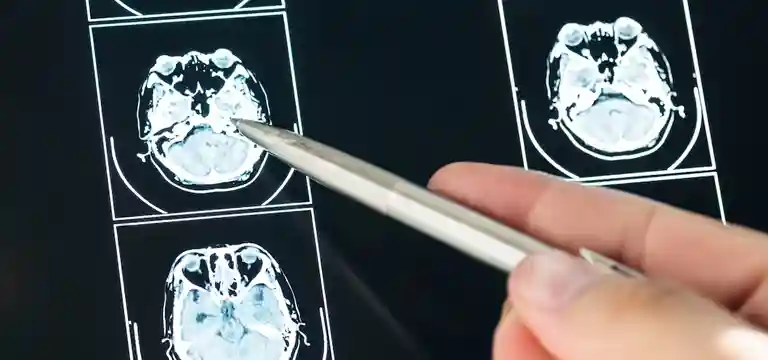
What Is Fever of Unknown Origin (Fuo) Or Pyrexia of Unknown Origin (Puo)? FUO/PUO is a condition in which an individual has persistent fever or fever on several occasions above 100 degrees Fahrenheit/ 38.3 degrees Celsius....
What Is Fever of Unknown Origin (Fuo) Or Pyrexia of Unknown Origin (Puo)?
FUO/PUO is a condition in which an individual has persistent fever or fever on several occasions above 100 degrees Fahrenheit/ 38.3 degrees Celsius. The cause behind the persistent fever is not diagnosed for at least 3 weeks.
Diagnosis is initially made using common serological tests and other diagnostic methods, called baseline investigation.
What Diagnostics Methods Are Usually Included in Baseline Investigation?
Following tests and imaging techniques are usually a part of medical investigation:
- Analysis of medical history
- Physical examination
- CBC test
- ESR test
- CRP test
- Electrolytes test
- LFT
- KFT
- Serum iron study
- Rheumatoid factor
- Urinalysis
- Urine culture
- Blood culture
- X-Ray of chest
- Ultrasound of abdomen
- Tuberculin skin test
It remains a challenge to diagnose the underlying cause of PUO, as it has successfully evaded the baseline investigations. It is difficult to diagnose the underlying cause because:
- The symptoms are inconsistent
- There is absence of diagnostic clues
- There is uncommon presentation of diseased state
Attempts have been made to characterize subgroups within PUO, such as, classical, neutropenic (low levels of Neutrophils which are a type of White Blood Cells), nosocomial (fever post- hospitalization), and related to HIV.
FUO/PUO can be differentially diagnosed by categorizing the causes into following:
- Infections
- Tuberculosis (most common)
- Endocarditis
- Abscess
- Typhoid fever
- Malaria
- Brucellosis
- Whipple’s disease
- Prostatitis
- Non-typhoid Salmonella serovars
- Cytomegalovirus infection
- Unknown AIDS
- Malignant tumors (occult)
- Lymphoma
- Renal cell carcinoma
- Acute myeloid leukemia
- Ovarian cancer
- Castleman’s disease
- Myeloproliferative disorders
- NIIDs – Noninfectious inflammatory diseases
- Giant cell/temporal arteritis
- Adult Still disease
- Systemic Lupus Erythematosus (SLE)
- Acute Rheumatic Fever
- Polymyalgia Rheumatica
- Miscellaneous causes
- Sub acute Thyroiditis
- Sarcoidosis
- Ulcerative Colitis
- Cirrhosis
- Drug fever
The three most common etiologies among the ones mentioned above are infections, occult malignancy and NIIDs.
What Are the Characteristics of Fever of Unknown Origin/ Pyrexia of Unknown Origin?
Characteristics of Fever of Unknown Origin/ Pyrexia of Unknown Origin:
- Persistent fever or fever on several occasions above 100 degrees Fahrenheit/ 38.3 degrees Celsius for at least 3 weeks
- Cause of fever undiagnosed (without established etiology) through baseline investigations/ diagnostic methods for 3 weeks or more
- Not immunocompromised –
Immunocompromised state due the following is excluded:
- Known HIV infection
- Neutropenia for at least 1 week in 3 months before onset of persistent fever
- Known hypogammaglobulinemia
- Use of prednisone 10-mg for at least 2 weeks in 3 months prior to onset of persistent fever
What Is the Role of Pet Scan in Diagnosing Fever of Unknown Origin/ Pyrexia of Unknown Origin?
After detailed re-analysis of medical history, physical examination and other diagnostic methods involving sample analysis (urine, blood, stool etc.), looking for potential signs and symptoms of diseased state, if there is no conclusive diagnosis made regarding underlying cause of illness and persistent pyrexia, FDG-PET scan is performed.
FDG-PET is used in Pyrexia of Unknown Origin or Fever of Unknown Origin for identification of focal points in body for malignancy, inflammation and infection, which can serve as a guideline for further diagnosis and personalized prognosis.
How Does Fdg-Pet Scan Help in Determination of Cause of Pyrexia of Unknown Origin?
PET scan operates on the principle of detection of radioactivity emitted by the radio tracer injected in the body.
Radiotracer is glucose which is radio – labeled (FDG – fluorodeoxyglucose) and it is injected into the body 1-2 hours before the actual scanning and imaging part of PET scan takes place. Tissues in the body take up this radiotracer within 1-2 hours of being injected.
Radioactivity is detected as the radiotracer taken up by the tissues emits photons. The color intensity and difference in colors that appear during PET scan signify different levels of metabolic activity of tissues or the difference in uptake of FDG.
Tumor cells, tissues having inflammation and tissues having infection take up more FDG as compared to normal cells and tissues. The extent of taking-up FDG may vary.
The color coding in PET scan helps in visual interpretation of low, moderate and high uptake of FDG by tissues in the body.
Following table can be referred for PET scan color coding:-
|
Color |
Inference of metabolic activity |
|
Red |
Area of very high uptake of FDG |
|
Yellow |
Area of high uptake of FDG |
|
Green |
Area of moderate uptake of FDG |
|
Blue |
Area of low uptake of FDG |
|
Grey/Black |
Area of no uptake of FDG |
What Are the Advantages and Disadvantages of Using Pet Scan for Fever of Unknown Origin/ Pyrexia of Unknown Origin?
Advantages of FDG-PET scan for PUO:
- Higher resolution of tissue
- Higher sensitivity in chronic low-grade infections
- Non – invasive procedure
- Painless procedure
- PET-CT scans are used for Fever of Unknown Origin/ Pyrexia of Unknown Origin. PET scan combined with CT scan (PET-CT scan) gives metabolic information along with anatomical information about the pathophysiology of diseases state.
Limitations of FDG-PET scan:
- FDG is eliminated from the body through urine. Hence, it is not effective in assessment of the Urinary Tract
- Due to peristalsis in gastrointestinal tract (GIT), there is diffused uptake of FDG in GIT.
Where to Get Pet Scan Done for Fever of Unknown Origin/ Pyrexia of Unknown Origin?
There are multiple options present for getting whole body PET scan for Fever of Unknown Origin. The best diagnostic facility for the same is Ganesh Diagnostic and Imaging Centre.
Whole body PET scan available at GDIC:
Whole Body PET scan at 23900 11950INR
FLAT 50% OFF BOOK NOW!
For getting 100% accurate reports, before getting PET scan for fever, you can also opt for our Fever Panel/ Fever Profile Tests:
Fever Panel-1 at 850 425INR
This includes:
- Dengue NS1 antigen
- Peripheral smear for Malaria
- Urine R/M
- Aerobic Blood Culture
FLAT 50% OFF BOOK NOW!
GDIC Fever Panel-1 Package at 1000 400INR
This includes:
- CBC
- Widal test (tube method)
- Malaria Parasite test
- Urine R/M
FLAT 60% OFF BOOK NOW!
Fever Package at 6240 3120INR
This includes:
|
CBC |
|
175 |
|
ESR |
|
75 |
|
SGPT |
|
85 |
|
Bilirubin Total |
|
130 |
|
Malaria Parasite |
|
75 |
|
Urine Routine |
|
55 |
|
Widal tube Test |
|
100 |
|
Widal Slide Test |
|
150 |
|
Rapid Blood C/S |
|
425 |
|
Malarial Antigen |
|
350 |
|
Typhi Dot IgG |
|
225 |
|
Typhi Dot IgM |
|
225 |
|
Dengue NS1 Antigen |
|
1050 |
|
Total Price |
|
3120 |
FLAT 50% OFF BOOK NOW!
GDIC Fever Panel-2 Package at 5310 2124INR
This includes:
- CBC
- Widal test (slide method)
- Urine R/M
- Rapid Blood C/S
- Malarial antigen
- Dengue NS1 Rapid Antigen
- Typhi dot IgG
- Typhi dot IgM
Why Ganesh Diagnostic and Imaging Centre Should Be Your Preference?
Ganesh Diagnostic and Imaging Centre is known for providing excellent service and care to its patients for decades.
It is an established and renowned diagnostic centre since 2001.
Their excellence is backed by NABH and NABL Accreditations.
NABH accreditation is proof of highest standard of care and service provided to the patients. NABL accreditation reflects the competency of laboratories and equipment based on some national and international standards.
The facility for Pathology testing operates 24x7, 365 days, providing service to patients round the clock!
Free home sample collection and digitally available test report enables patients to get tests done at the comfort of their homes.
All safety precautions are taken while collection and transportation of samples. Samples are collected in a hassle-free manner, labeled correctly and transported back to the lab safely.
Test report is generated within 24 hours of sample collection, therefore reducing the gap between diagnosis and treatment effectively.
Ganesh Diagnostic and Imaging Centre is a one-stop solution for getting all kinds of tests done, as all services are available under one roof.
Get a Consultation from renowned radiologist Dr Ravin Sharma.
The aim of GDIC is to provide world’s finest technology at the lowest price.
The rates of tests are reasonably priced. Ganesh Diagnostic and Imaging Centre also offer FLAT 50% OFF on many tests.
Patients can rely upon test reports as reports are 100% accurate.
Ganesh Diagnostic and Imaging Centre have skilled staff of radiologists, pathologists and technicians.
Ganesh Diagnostic and Imaging Centre is empanelled with various prestigious government and private organizations such as:
- CGHS NHA
- NCDC
- NDMC
- DGEHS
- ECHS
- DELHI JAL BOARD
- DAK
- RAILWAYS
- BSES YAMUNA/ RAJDHANI POWER LTD
- TATA POWER LTD
- BJRM HOSPITAL
- ICAR
- BHAGWAN MAHAVIR GOVERNMENT HOSPITAL
- MINISTRY OF HOME AFFAIRS
For more information regarding panels, click here!









